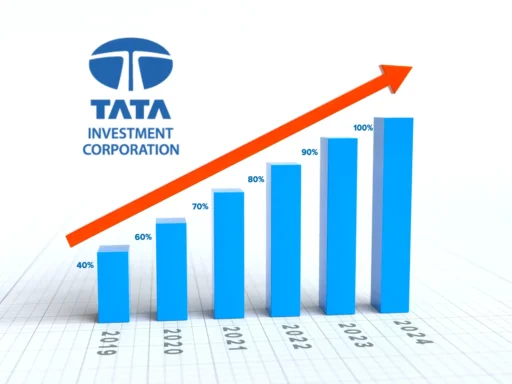Imagine awakening one morning to find that your net worth had doubled overnight – is this fantasy or reality? For many investors who’ve made wise investments in the stock market, this dream has come true.
This blog post provides you with the knowledge and strategies necessary to navigate the stock market effectively and potentially achieve significant financial gains.
By the time this guide concludes, you’ll understand the fundamentals of stock investing as well as a range of investment strategies, risk management techniques, and practical tips to make informed decisions. By then you will have a strong basis upon which to build an investment portfolio that yields long-term growth.
Understanding the Stock Market

Imagine the stock market as a marketplace where individuals buy and sell pieces of ownership in companies – these pieces of ownership are known as stocks – thus becoming part-owners in those businesses when you invest.
Key Terms:
- Stock exchange: A marketplace where stocks can be bought and sold; examples include the New York Stock Exchange (NYSE) and Nasdaq.
- Dividend: Dividends are payments distributed to shareholders of a company as a form of profit sharing between management and investors. Dividends allow businesses to distribute a portion of their earnings among their stakeholders in cash payments known as dividends.
- IPO: Initial Public Offering, or an IPO, occurs when a private company makes its stock available to the general public for sale for the first time.
- Bull market: An upward-sloping stock price environment characterized by optimism and investor trust.
- Bear Market: A period in which stock prices decrease sharply. It often leads to economic uncertainty and pessimism.
How Does the Stock Market Work?
Numerous factors can have an effect on the price of stocks, including:
- Company Performance: If a company performs well financially, its stock price may increase; on the contrary, poor performance could lead to its decline.
- Economic Conditions: Economic downturns may have an impactful effect on stock prices, leading them to decrease significantly in a short timeframe.
- Market sentiment: Investor emotions and expectations can play a large role in stock prices, particularly those optimistic about the future. When these investors feel optimistic, they may purchase more shares, driving prices up.
- News and events: Any significant announcement concerning a company, industry or economy can cause stock prices to fluctuate significantly. A positive earnings report could increase share prices while natural disasters or political turmoil could have an adverse effect.
Getting Started
Before investing in the stock market, it’s necessary to open a brokerage account – this financial account allows you to buy and sell stocks. There are various types of brokerage accounts, including:
- Full-service brokerage: Provides tailored advice and assistance from financial advisors.
- Discount brokerage: Discount brokerage services provide online trading tools at lower costs than full-service brokerages.
- Robo-advisor: These platforms utilize algorithms to manage investments based on your risk tolerance and investment goals.
Your best choice for brokerage accounts depends on both your investing style and experience level. For newcomers to investing, discount brokerage or robo-advisor accounts could be ideal options.
Once you’ve opened a brokerage account, the next step should be research stocks. Knowing more about their performance can be vital when making informed investment decisions; here are some strategies for finding promising stocks:
- Analyze Your Company’s Finances: Examine its income statement, balance sheet and cash flow statement to evaluate its financial health.
- Examine Your Industry: Before investing, carefully assess the health and growth potential of the industry where the company operates.
- Read news and analyst reports: Stay abreast of your company’s latest updates, as well as opinions from analysts who cover its industry.
- Think About Your Company’s Management Team: A strong and experienced management team can be seen as an indication that all is going well within your company.
Diversification is another essential component of investing. By diversifying across stocks, industries and asset classes you can reduce the risk of money loss. Here are some strategies for diversifying your portfolio:
- Investment Mix of Stocks and Bonds: Bonds tend to be less risky than stocks.
- Diversify investments across different economic sectors: This will protect you from industry-specific downturns.
- Invest in international stocks: Diversifying across different economies is one way of mitigating risks associated with specific countries’ economies.
- Consider Index Funds as an Instant Diversifier: Index funds provide instant diversification by tracking a broad market index, providing instant diversification.
Investment Strategies

Buy-and-Hold:
Buy-and-hold is an increasingly popular investment strategy. This involves purchasing stocks and holding onto them over the long-term rather than trying to time the market. One advantage of this method is that it helps avoid emotional ups and downs of short-term trading; over time, the stock market tends to go up, leading to significant gains for those holding onto their stocks over time.
Dividend Investing:
Dividend investing involves selecting stocks that provide regular dividend payments to shareholders. Dividends are distributed as part of a company’s profits to investors as income, providing you with an enduring source of income even if their stock doesn’t appreciate significantly over time.
Growth Investing:
Growth investing involves selecting companies expected to experience rapid expansion. Such firms often reinvest their profits back into the business to fuel that expansion, providing significant returns but with greater volatility than dividend-paying stocks.
Value Investing:
Value investing entails searching for stocks that are undervalued relative to their intrinsic worth, or trading at a discounted rate when measured against their assets and earnings potential. Value investors believe that over time, markets will recognize these undervalued stocks’ true worth and cause their price appreciation.
Risk Management
Investing in the stock market involves risk. Understanding different types of risk can help you make informed decisions and protect your investments.
- Market risk: This refers to the overall risk of the stock market itself. Even if you invest in well-managed companies, market fluctuations can impact your portfolio.
- Company risk: This is the risk associated with a specific company. Poor company performance, financial scandals, or industry downturns can negatively affect a stock’s price.
- Liquidity risk: This is the risk of not being able to sell your investments quickly at a fair price. This can be a concern for investments in illiquid stocks or markets.
Assessing your risk tolerance is crucial. This refers to your ability to handle potential losses. If you have a high risk tolerance, you may be comfortable investing in more volatile stocks. If you have a low risk tolerance, you may prefer to invest in more stable investments.
Stop-loss orders can be a helpful tool for limiting losses. A stop-loss order is an instruction to your broker to sell a stock if its price falls below a certain level. This can help protect you from significant losses if a stock’s price declines sharply.
Common Mistakes to Avoid
One of the biggest pitfalls for new investors is emotional investing. Making investment decisions based on fear or greed can lead to poor results. When the market is doing well, it’s easy to get caught up in the excitement and invest in overvalued stocks. Conversely, during market downturns, fear can lead to selling off good investments at a loss.
Another common mistake is chasing trends. When a particular stock or sector is hot, it can be tempting to jump on the bandwagon. However, chasing trends can be risky, as overhyped stocks are often overpriced and may not continue to perform well.
Finally, overtrading can be detrimental to your investment returns. Excessive trading can lead to higher transaction costs and erode your profits. It’s important to be patient and avoid making impulsive trades based on short-term fluctuations.
Conclusion
In this blog post, we have explored the fundamentals of investing in the stock market, explored various investment strategies, and highlighted risk management’s importance. Remember, investing involves risk, but with knowledge and discipline it can be rewarding!
As a beginner investor, it is wise to start small and learn as you go. Don’t be intimidated by advice from financial professionals or experienced investors; remain patient and avoid making snap decisions based on emotional impulses.
By following these guidelines and continually educating yourself about the stock market, your chances of reaching your financial goals increase significantly.





